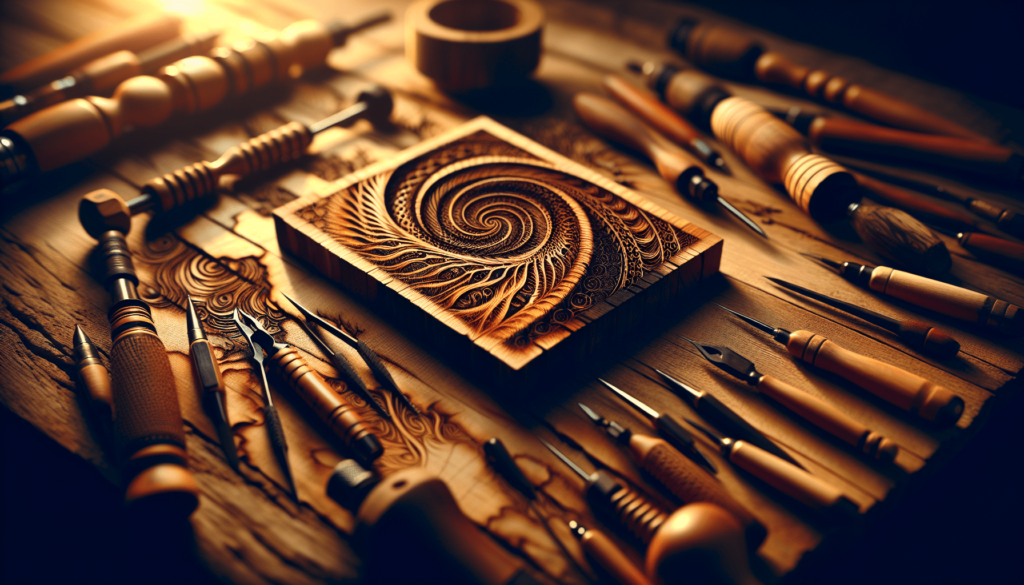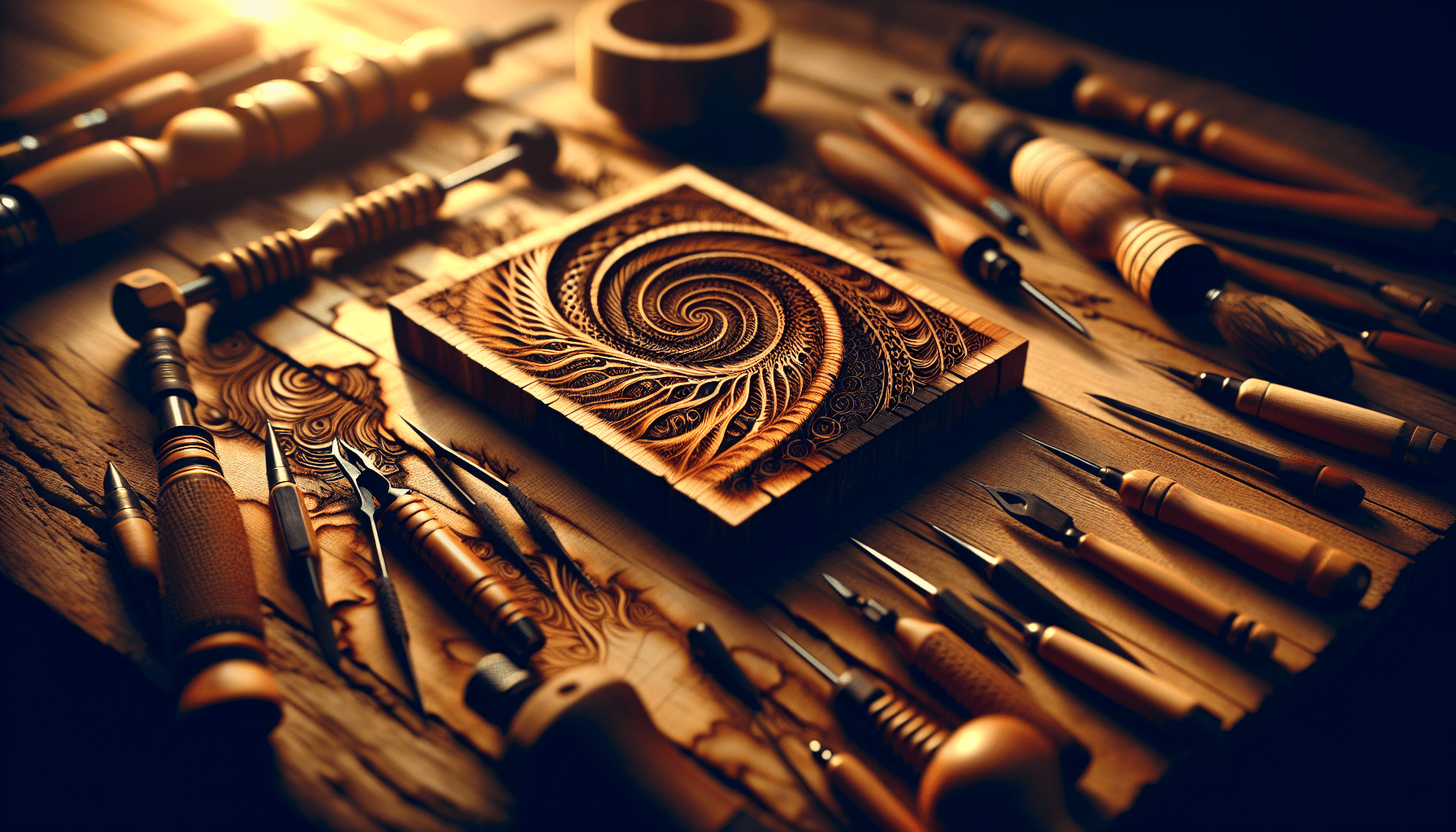I recently found myself curious about wood burning and whether it could be a fulfilling hobby to pick up. This art form, also known as pyrography, involves using a heated pen to create designs on wood surfaces. It combines creativity and craftsmanship, offering a tangible sense of accomplishment with each completed project. From intricate patterns to simple decorations, wood burning allows for endless possibilities and personalization. If you’re seeking a new hobby that merges artistic expression with hands-on activity, wood burning might just be the perfect fit. Is wood burning a good hobby? I found myself pondering this very question as I browsed through countless craft forums and social media pages. It seems like everyone these days is picking up a hobby, and wood burning—or pyrography, as the aficionados call it—has caught quite the buzz. But is it truly worth the time, effort, and, let’s be honest, minor burns? Let’s dive in and explore this intriguing world of charring wood for fun and art.

What Exactly is Wood Burning?
You might be wondering, what on earth is wood burning? Wood burning, or pyrography, is the art of using a heated tool to burn designs into wood (or sometimes leather). It sounds simple enough, right?
Imagine wielding a tiny branding iron, meticulously scorching intricate patterns, names, or images onto a wooden surface. But don’t be fooled; it takes a good amount of skill, patience, and a steady hand to create something that doesn’t look like a chicken scratch map of a pirate’s treasure.
The Tools of the Trade
Let’s chat about the gear you’ll need. Beyond your basic wood and burning tool, there are a few other essentials and nice-to-haves that can elevate your wood-burning game.
Essential Tools
| Tool | Purpose | Approximate Cost | Notes |
|---|---|---|---|
| Wood Burning Pen | Primary tool for burning designs | $20-$100+ | A good quality pen with adjustable heat settings is crucial. |
| Wood | Canvas for your art | $5-$50 | Different woods offer different burning experiences. Soft woods like pine are easier to work with. |
| Sandpaper | Preps wood surface | $5 | Smoothing the wood ensures even burning. |
| Carbon Paper | Transfers designs | $5-$10 | Helpful for copying intricate designs onto wood before burning. |
Optional Add-Ons
| Tool | Purpose | Approximate Cost | Notes |
|---|---|---|---|
| Stencils | Guides for designs | $5-$20 | Great for beginners who need a jumpstart on ideas. |
| Color Pencils or Paints | Add color to designs | $10-$20 | For when you want to go beyond monochrome. |
| Safety Gear | Protects from fumes and burns | $10-$15 | Masks and gloves are a must for safety. |
The Allure of Wood Burning
So why would someone spend hours meticulously burning a piece of wood? The allure lies in the intricate balance between art and craft. Here are some reasons why wood burning might just be your next favorite hobby.
Creativity Unleashed
Wood burning allows for a unique form of self-expression. You can create anything from simple line drawings to elaborate, lifelike portraits. Unlike painting or drawing, you’re working with a single, unchangeable color—burnt. This restriction can sometimes boost creativity, forcing you to think about shading and depth in new ways.
The Joy of Physical Craft
In our increasingly digital world, there’s something profoundly satisfying about creating a tangible piece of art with your hands. Each piece is a reflection of the time, effort, and thought you’ve invested. Not to mention, it does wonders for your hand-eye coordination.
Therapeutic Benefits
Much like knitting or gardening, wood burning can be incredibly therapeutic. The repetitive nature of the motion and the focus required can be immensely calming. It’s a little zen, a little mindfulness, and a whiff of burnt wood all rolled into one.
The Learning Curve
Okay, so it’s not all a walk in the park. Let’s address the elephant in the room—or should I say, the splinter in the wood. Wood burning comes with its own set of challenges.
Beginner’s Hurdles
When you’re starting, expect some frustration. Your hands might tremble, you might accidentally scorch a part of your design, or worse, burn yourself. But like any art form, practice makes perfect. The more you practice, the more control you gain over your tool and medium.
Time Commitment
Wood burning is not a quick art form. Depending on the complexity of your design, you might spend anywhere from a few hours to several weeks on a single piece. It requires patience and a genuine love for the process.
Safety Concerns
You’re working with hot tools and potentially toxic fumes (depending on the type of wood). Always work in a well-ventilated area, and consider wearing a mask and gloves to protect yourself.

Techniques to Master
Just as there are various brush strokes in painting, there are different techniques in wood burning. Mastering these can take your work from amateur to stunning.
Basic Strokes
The foundation of any wood-burning project is mastering a few basic strokes.
- Dotting: As the name suggests, this involves using the point of your pen to make a series of small dots. Great for adding texture.
- Shading: By tilting your pen, you can create various shades of burn. The lighter the touch, the lighter the shade.
- Lines: Straight, curved, or wavy lines form the basis of most designs. Controlling the thickness and angle is crucial.
Advanced Techniques
Once you’ve got the basics down, you can explore more advanced techniques.
- Gradation: This involves creating a smooth transition from dark to light. It’s particularly useful for creating realistic images.
- Texture: Experimenting with different tips or nibs can help add texture to your work. From fur to feathers, the possibilities are endless.
- Layering: Burning multiple layers can give your piece depth and dimension, making it more visually interesting.
Choosing the Right Wood
Not all wood is created equal when it comes to pyrography. Different types of wood will yield different results. Let’s break it down.
Softwoods vs. Hardwoods
| Type | Features | Examples |
|---|---|---|
| Softwoods | Easier to burn, less detail | Pine, Cedar |
| Hardwoods | More precise, higher detail | Maple, Birch, Oak |
Treated vs. Untreated Wood
Always opt for untreated wood. Treated wood can release toxic fumes when burned, which is not only harmful to your health but can also affect the quality of your work.
Personal Experience and Stories
Let’s not glaze over the personal aspect here. My first time picking up a pyrography pen was both exhilarating and nerve-wracking. Armed with a cheap starter kit and a YouTube tutorial, I set out to burn a simple leaf pattern into a scrap piece of pine.
The Early Days: Trials and Errors
My hands trembled like I was performing brain surgery, the lines were wobbly, and I ended up with a piece that looked more like a burnt offering than art. Over time, my confidence grew, and so did my skill. There’s something incredibly satisfying about looking at older pieces and seeing how far you’ve come.
Community and Camaraderie
One of the unexpected joys of wood burning is the sense of community. There are countless online forums, social media groups, and local classes where you can share your work, ask for advice, and learn from others. It’s like having a virtual support group for fire-wielding artists.
Practical Applications
You might be wondering, “Well, what do I do with burnt wood?” Beyond the artistic satisfaction, there are plenty of practical applications.
Gifts and Decor
Handmade gifts are always a hit, and something personalized holds a special charm. From custom coasters to elaborate wall art, the possibilities are endless. Plus, who doesn’t like the smell of burnt wood with a splash of creativity?
Selling Your Work
If you get good enough, there’s potential to sell your creations. Platforms like Etsy are filled with artists selling custom wood-burned pieces. While it’s not likely to become a primary source of income, it can certainly help fund more wood and new tools.
Functional Art
Think beyond traditional art pieces. Wood burning can transform mundane objects into something special. Kitchen utensils, picture frames, and even furniture can be personalized. It’s a fantastic way to combine functionality and aesthetics.
The Cost Factor
Starting any new hobby often begs the question, “How much is this going to cost me?” Fortunately, wood burning is relatively affordable compared to other artistic pursuits.
Initial Investment
Your initial investment will primarily be in a wood burning pen and some basic materials. You can start with an entry-level kit for around $30-$50.
Ongoing Costs
After the initial setup, your ongoing costs will mostly be in wood and replacement tips/nibs for your pen. This can vary based on the type and size of the projects you undertake. However, it’s generally not a bank-breaker.
Final Thoughts: Is Wood Burning Worth It?
So, is wood burning a good hobby? In my opinion, absolutely. It combines creativity, practicality, and a touch of old-world charm. Yes, it has its challenges, but those are far outweighed by the benefits.
Pros and Cons Table
| Pros | Cons |
|---|---|
| Incredibly satisfying and therapeutic | Steep learning curve |
| Affordable startup costs | Time-consuming |
| Endless creative possibilities | Safety concerns |
If you have a penchant for crafting and don’t mind a little trial and error (plus maybe a couple of fingertip singes), wood burning could be just the hobby you’re looking for.
And hey, worst case scenario, you’ll always have kindling for the fireplace.

